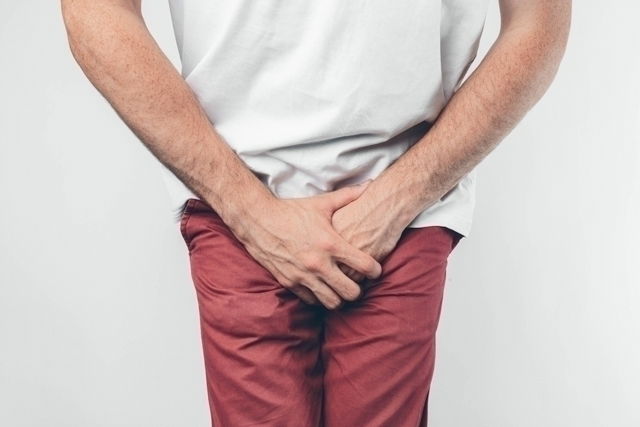A lump, or nodule, on the testicle within the scrotum is a relatively common symptom that can occur in men of any age, from childhood to older adults. Lumps are rarely a sign of cancer, and can occur with or without pain or other symptoms, like swelling or pressure.
In any case, lumps should always be assessed by a doctor, as it is the only way to rule out a serious cause. Even if it is not serious, lumps that are causing discomfort or other changes may require treatment.
The 7 most common causes of lumps on testicles are:

1. Hydroceles
Hydroceles are small pockets of liquid that can accumulate in the scrotum beside the testicle. When palpated, it feels like a lump. This problem is common in babies, but it can happen in men especially over the age of 40. Although it is not a serious problem, larger hydroceles are associated with more pain and discomfort.
How it’s treated: Generally hydroceles do not require any specific treatment. However, hydroceles that cause a lot discomfort or do not resolve on their own may removed with a small surgical procedure. A urologist will inject local anesthesia in the area to make a small incision to excise the hydrocele.
2. Varicocele
This is the most common causes of testicle lumps, and it occurs when veseels that transport blood within the testicles dilate and become larger than usual. Blood starts to accumulate in the area, which can cause a lump. In these cases, it is common to feel pain and pressure.
How it’s treated: Symptoms of varicoceles can be managed with analgesics like acetaminophen. However, if there is a risk for infertility or dysfunction, the doctor may recommend surgery to close-up the dilated vessel to bypass circulation to healthy vessels.
3. Epididymitis
Epididymitis occurs when the epididymis, which connects the testicle to the vas deferens, becomes swollen from a bacterial infection. These infections are especially common after unprotected sex. In addition to feeling a lump in the testicle, you may also develop symptoms like pain, swelling, fever and chills.
How it’s treated: Epididymitis is often treated with antibiotics to resolve the underlying infection. The doctor may prescribe one dose of injected ceftriaxone followed by a 10-day course of oral doxicycline. You should follow treatment as advised by your doctor.
4. Testicular torsion
Testicular torsion is a very easy problem to identify. It causes sudden, intense testicular pain as well as swelling and a palpable lump. Torsion is more common in boys and men under the age of 25.
How it’s treated: Testicular torsion is a medical emergency, and it should be treated with surgery in the first 12 hours to avoid tissue death. If you suspect torsion, you should proceed immediately to the hospital.
5. Epididymal cyst
This type of cyst, also known as a spermatocele, consists of a small pocket that forms in the epididymis where the vas deferens connects to the testicle. In most cases, the cyst does not cause pain, however, if it is left untreated and continues to grow, it can become a granulated lump that causes pain and discomfort.
How it’s treated: Treatment is necessary when symptoms are experienced. The doctor will often recommend conservative treatment, by addressing pain with analgesics or anti-inflammatories, like acetaminophen or ibuprogen. If symptoms do not improve within 2 weeks, the doctor may recommend surgical removal of the cyst.
6. Inguinal hernia
Inguinal hernias emerge when a portion of the intestine is able to pass through weakened abdominal muscles. This occurs more commonly in children, older adults and after recent abdominal surgery. An inguinal hernia will bulge into the scrotum, leading to the sensation of a lump on the testicle. Learn more about what causes inguinal hernias.
How it’s treated: An inguinal hernia requires surigcal treatment to place the migrated intestine back to the abdominal area it belongs.
7. Testicular cancer
Although this is a more rare situation, the development of testicular cancer can cause the emergence of a small lump in the testicle. Normally, cancer in the testicles will develop without any pain, which is why it is important to see a doctor if you feel any lumps, even if the lump is painless.
How it’s treated: In almost all cases, it is necessary to remove the etsticle to prevent the spread of cancerous cells to the other testicle or to other tissues in the body.
When to go to the doctor
Symptoms that require immediate assessment in the emergency room are:
- Intense and sudden pain
- Obvious swelling in the area
- Fever and chills
- Nausea and vomiting
In any case, assessment of new testicular lumps is important, even if you do not have any other symotoms. Assessment is necessary to rule out more serious causes, like cancer.
